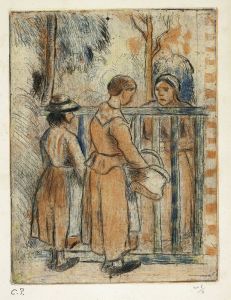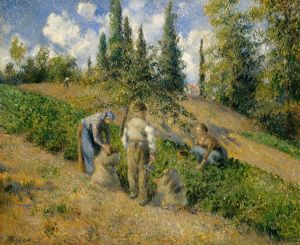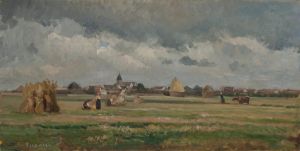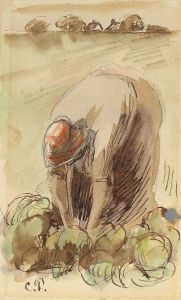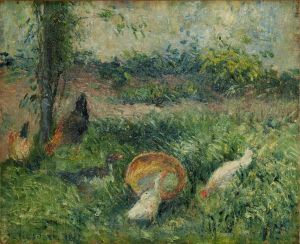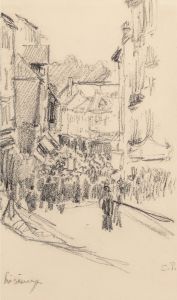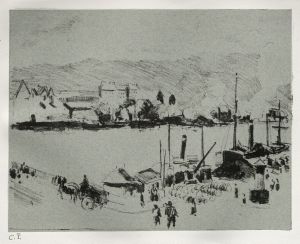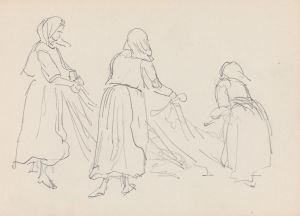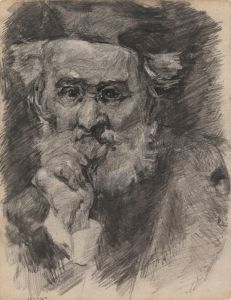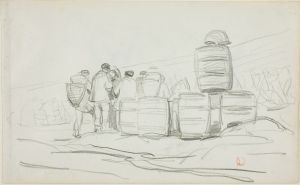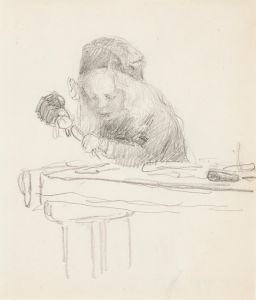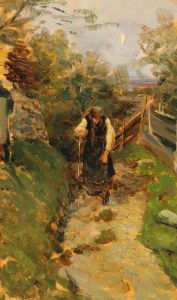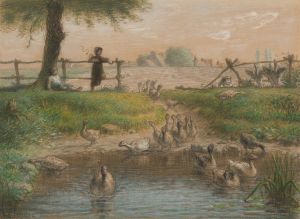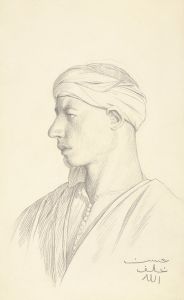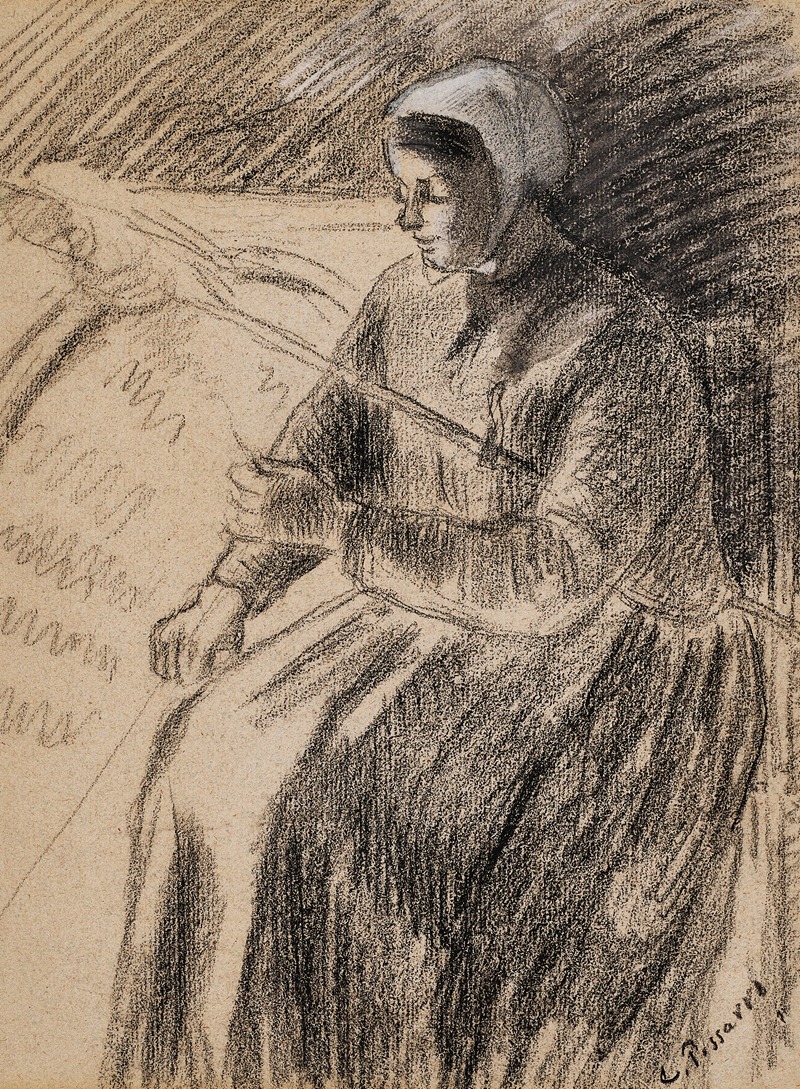
Étude pour une paysanne assise devant un rouet
A hand-painted replica of Camille Pissarro’s masterpiece Étude pour une paysanne assise devant un rouet, meticulously crafted by professional artists to capture the true essence of the original. Each piece is created with museum-quality canvas and rare mineral pigments, carefully painted by experienced artists with delicate brushstrokes and rich, layered colors to perfectly recreate the texture of the original artwork. Unlike machine-printed reproductions, this hand-painted version brings the painting to life, infused with the artist’s emotions and skill in every stroke. Whether for personal collection or home decoration, it instantly elevates the artistic atmosphere of any space.
Camille Pissarro's Étude pour une paysanne assise devant un rouet (Study for a Peasant Woman Seated at a Spinning Wheel) is a lesser-known work by the renowned French Impressionist and Neo-Impressionist painter. Pissarro, born in 1830 on the island of St. Thomas in the Danish West Indies, is celebrated for his depictions of rural life, landscapes, and scenes of everyday labor, often portraying the dignity and simplicity of peasant life.
This particular study, as the title suggests, focuses on a peasant woman seated at a spinning wheel. The artwork is a preparatory study, meaning it was likely created as part of Pissarro's process of exploring composition, form, or subject matter for a larger or more finished work. The subject matter aligns with Pissarro's lifelong interest in rural themes and his commitment to portraying the working class with empathy and respect. His works often reflect his anarchist beliefs, emphasizing the value of labor and the connection between humans and nature.
The medium and dimensions of this study are not widely documented, but it is presumed to be executed in a traditional medium such as pencil, charcoal, or ink, which Pissarro frequently used for his preparatory sketches. The style of the piece likely reflects his characteristic attention to detail and his ability to capture the essence of his subjects with economy and precision.
Pissarro's works from this period often depict rural life in France, particularly in areas like Pontoise and Éragny, where he lived and worked for significant portions of his career. His focus on peasant life was influenced by his admiration for earlier artists like Jean-François Millet, who also depicted rural laborers with dignity and realism.
While Étude pour une paysanne assise devant un rouet is not among Pissarro's most famous works, it provides insight into his artistic process and his dedication to portraying the lives of ordinary people. The study reflects his broader artistic philosophy, which sought to elevate everyday scenes and subjects to the level of fine art.
Further details about the provenance, current location, or exhibition history of this specific study are not readily available in public records. As with many preparatory works, it may reside in a private collection or remain part of a lesser-known archive of Pissarro's sketches and studies.





